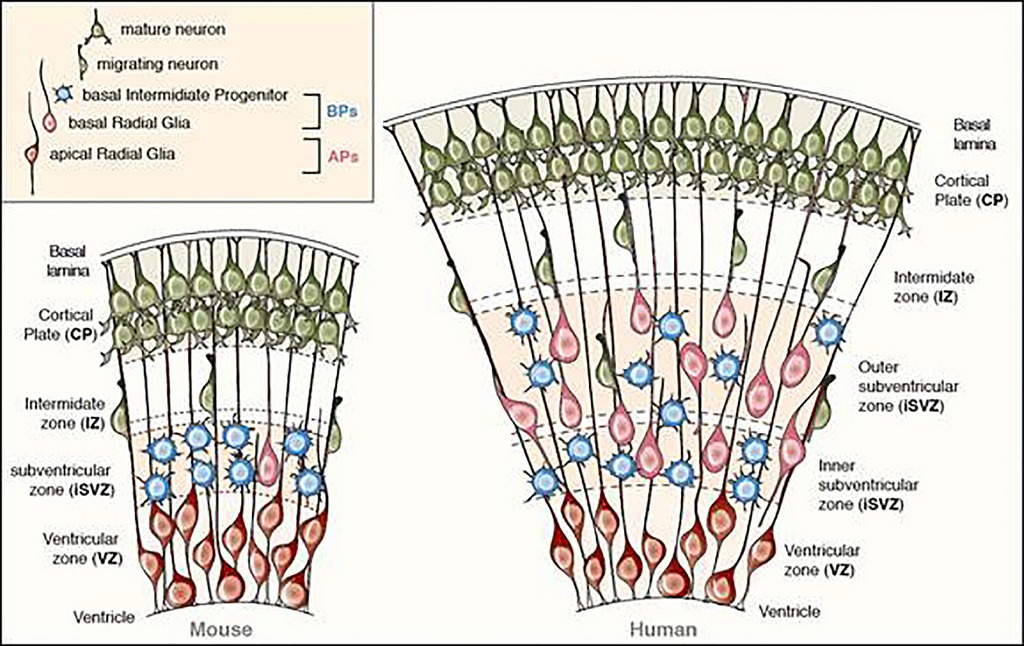
A single base change in a human gene likely played an important role in evolutionary expansion of the human brain, researchers say. The results pinpoint an element unique to the human genome and to human-specific aspects of brain development. Bigger brains – an enlargement that largely reflects the increased number of neurons generated during development – are accompanied by the emergence of cognitive functions unique to humans. The human gene ARHGAP11B is the only known human-specific protein-encoding gene to promote the proliferation of neural progenitors during the development of the neocortex, the part of the human brain associated with sight and hearing. The gene arose on the human evolutionary lineage approximately one million years after divergence from the chimpanzee lineage, existed in Neanderthals and Denisovans, and is found in all present-day humans. It is also the product of a partial duplication of ARHGAP11A. Interestingly, the modern human gene lacks 55 nucleotides present in the precursor version. Here, Marta Florio, Svante Pääbo and colleagues show that the 55 nucleotides are deleted by mRNA splicing due to a single cytosine to guanine substitution that creates a novel splice site. The researchers recreated an ancestral version of the gene without the substitution and found that it exhibited similar protein activity as the paralog ARHGAP11A, but did not have the ability to increase neural progenitors. They concluded that the ability of the modern human gene to amplify neural progenitors arose not from the duplication of ARHGAP11A, but more recently, from a tiny change on the genomic scale – specifically, from a base change that led to a novel, human-specific terminal sequence in the protein encoded by the gene.
__________________________________________________
Apical progenitors (APs) and basal progenitors (BPs) in an embryonic mouse and a fetal human neocortex. Credit: Florio et al. Sci. Adv. 2016;2:e1601941
______________________________________________________
Article Source: Science Advances press release
______________________________________________________
Subscribe to Popular Archaeology Premium. Available on all laptops and mobile devices, and still the industry’s best value at only $9.00 annually.
___________________________________________
Travel and learn with Far Horizons.
____________________________________________
This richly illustrated issue includes the following stories: Recent findings shedding new light on the whereabouts of the remains of Philip of Macedon, father of Alexander the Great; how an archaeologist-sculptor is bringing bones of the dead back to life; archaeologists uncovering town life at the dawn of civilization; an exclusive interview with internationally acclaimed archaeologist James M. Adovasio about what makes the Meadowcroft Rockshelter prominent in the ongoing search for the first Americans; what archaeologists are finding at the site of the ancient city of Gath, the home town of the biblical Philistine giant, Goliath; and how scientists are redrawing the picture of human evolution in Europe. Find it on Amazon.com.







